Video games have been around a long time and have grown into maturity, becoming a respected art form. The game industry, as commercial as it has become, still leaves room for limitless new ideas of all scales from Indie to AAA. Keeping a pulse on the indie game industry will never cease to amaze as fresh concepts continue to rise all the time.
Despite this, sound, a major toolkit in the video game medium, has been consistently pushed to the back as an afterthought, rather than being given serious consideration as a powerful game mechanic. Where will we find our gamified sound fun but in a splash-filled game of Marco Polo?

What is a Game Mechanic?
For non-game developers who aren’t familiar with the term, a game mechanic is a fundamental component to every game, be it a video game, board game, or horrific human experiment like the Saw movies. A mechanic provides a way for the player to interact with the game or sets guidelines by which the game must be played. Defining the term can be elusive as its scope is quite broad and can include almost anything that contributes directly to the way a player plays the game. Most games consist of a set of mechanics that work together to create the essence of the gameplay. Game mechanics are the core artform of game making.
In hopes to inspire new uses for sound in games, we put together a list of some ways that game developers have integrated sound into the core, inseparable part of their game’s mechanics.
Puzzles
Why not stump your players with a sense that they all too often take for granted? While far less common (and sometimes posing issues with compatibility in the deaf community), puzzle games that incorporate sound into their puzzles are are forcing gamers to step out of their comfort zones, and this is a good thing.
The Witness
In Jonathan Blow’s The Witness, there is an entire set of puzzles based solely on listening to the sound of the game. The core mechanic of the game is to trace a portion of a sort of ‘map’ on a screen in the game. One of the more well-known audio puzzles here requires you to listen to the sound of the bird call happening in the background and trace a rough representation of the pitch of the bird call onto this map. Without giving much of a hint about what was required to solve the puzzle, Jonathan Blow forced players to begin thinking out-of-the-box, and out of the normal mechanics of video gaming.
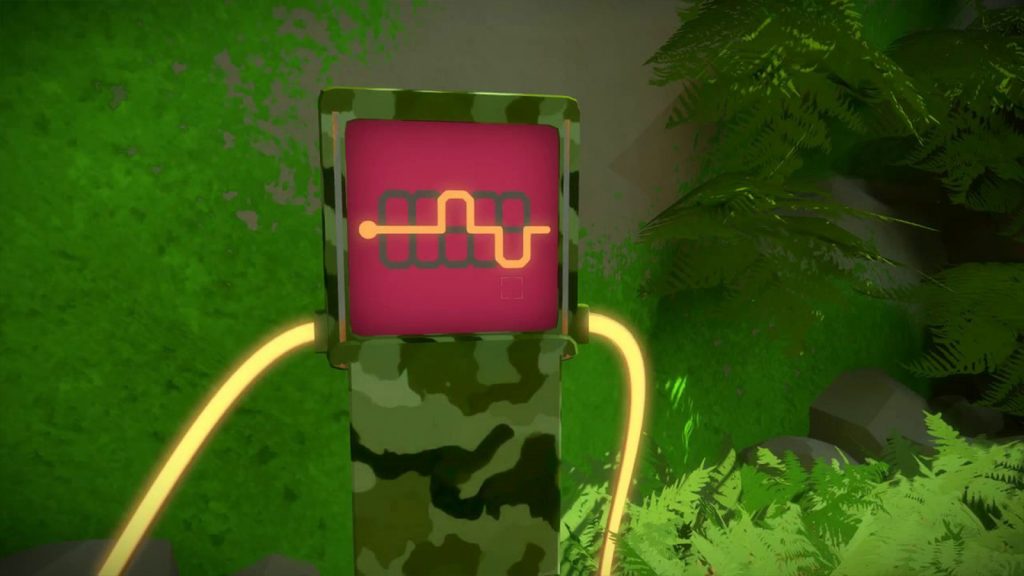 Tracing the pitch of the bird’s call into the puzzle machine
Tracing the pitch of the bird’s call into the puzzle machine
Spoiler Alert! If you plan to play the game, don’t watch this video!
Myst
Taking it back to the old-school, the classic game Myst (around when PC games still came as free CD-ROMs in cereal boxes) was an early adopter of the use of sound as an essential component to its puzzles. On one occasion, you were led to a locked door containing a series of sliders. Each of these sliders played back a different sound (a clock, a train, water, etc). These sounds were hints to the locations of the essential switches you needed to press to unlock the door.
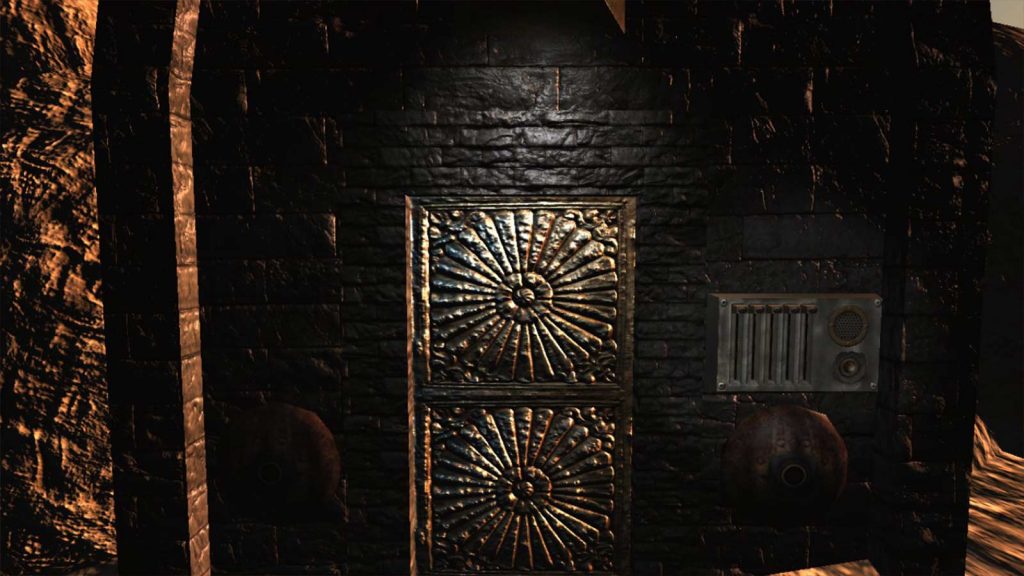 There’s no getting around this puzzle without audio. So much for ADA compliance.
There’s no getting around this puzzle without audio. So much for ADA compliance.
Localization
This is probably the most obvious use of sound in games. Three-dimensional localization with sound has become essential for the professional gamer and has given rise to a plethora of professional surround sound headphones and algorithms that allow the user to audibly visualize the entire sound field. As VR has been picking up more steam, more advanced software tools have come about to improve localization. There are a few factors to consider:
Distance: The further away, the less volume the sound has. But the spectrum of the sound also changes. A sound in the distance has less energy in it’s high and low frequencies. This is a realistic indicator that something is very far away. Battlefield games achieve this well in their large open maps, letting distant gunshots sound like minor pops.
Direction: While the simplest of localization concepts, directionality is the most important in first-person games. Directionality in games has evolved from simple stereo to surround sound, and recently more evolved surround sound with headphones, using something called a head-related transfer function (HRTF), which replicates the way the human head perceives sound. This gives full directionality including above and below a player.
Acoustics: Every room sounds a bit different based on its size, geometry, and contents. The way something sounds from another room can be a mental cue for players.
Occlusion: When there is a wall in between you and a series of gunshots, depending on the size and thickness of the wall, the gunshots should sound more or less muted. Objects that occlude sound give the world more dimension and informs the player.
Masking: A great (an often unthought of) factor is the masking of softer sounds by much louder sounds (think A Quiet Place when they went to the waterfall). The more your player relies on sound, the more it matters when it’s interrupted.
For localization, while just about any AAA first-person shooter makes localization an important aspect of gameplay (and some do a really great job at implementing and mixing their sound), we’ll discuss just one here.
Fortnite
Fornite deserves mention for their innovative method of making sound an accessible tool even without headphones. When you play on your phone, they provide a ring around your player, illuminating certain parts of that ring that corresponds to where sounds are coming from. After all, in a huge battle royale where you only get one life, understanding what’s going on around you is vital!
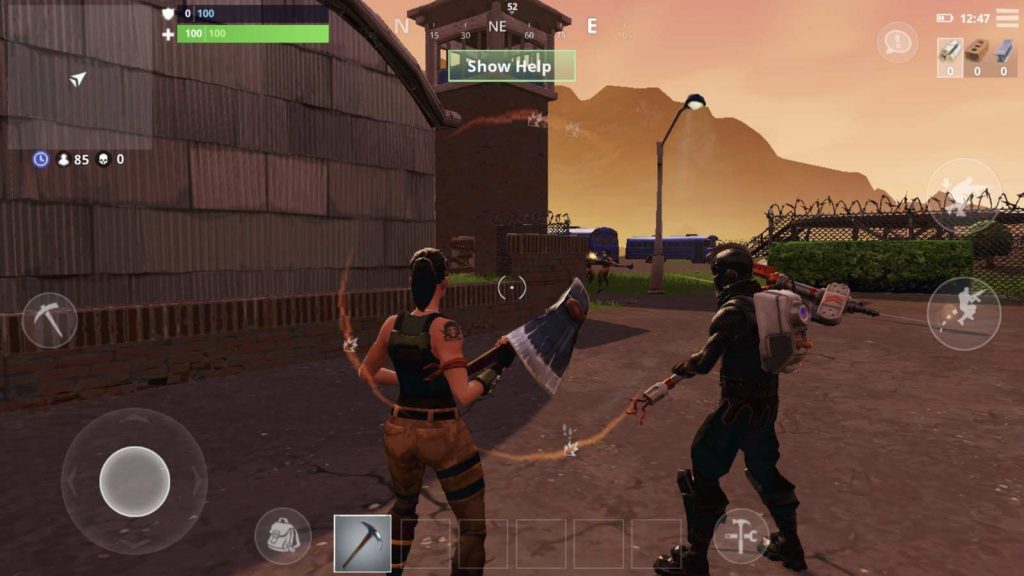 Check out the orange sound visualizers around the player. What a life-saver!
Check out the orange sound visualizers around the player. What a life-saver!
Stealth
While stealth games use localization concepts, these deserve their own section because instead of using sound cues to understand your environment, these games present sound in an additional gamified way: prevent yourself from making sound so you can sneak up on your opponent unnoticed. While many stealth games ignore the intricacies that sound can give to the gameplay, some games deserve some mention.
Thief
In the original Thief game, sound was a very important part of the game. Even things like surface material mattered. If your character was walking on a hard surface floor, he would make more noise and be put at more of a disadvantage as opposed to if he were walking on carpet. Prior to entering new rooms, the sounds you hear emanating from that room play a vital role in your plan of attack, as you can hear the character of the sounds and the room, like how reverberant it is there.
 Cobblestone is going to be noisy. Those shadows will come in handy.
Cobblestone is going to be noisy. Those shadows will come in handy.
Splinter Cell
The Splinter Cell games introduced the sound meter, which is a UI representation of how much sound you’re actually making. If the bar gets too far to the right, you’re being too loud and will probably alert enemies in the area. In more recent sequels, they’ve experimented with taking out the UI bar and implementing it in some other unobtrusive way or removing it altogether. While the implementation isn’t necessarily graceful, it makes sound a very important aspect to pay attention to in the game.
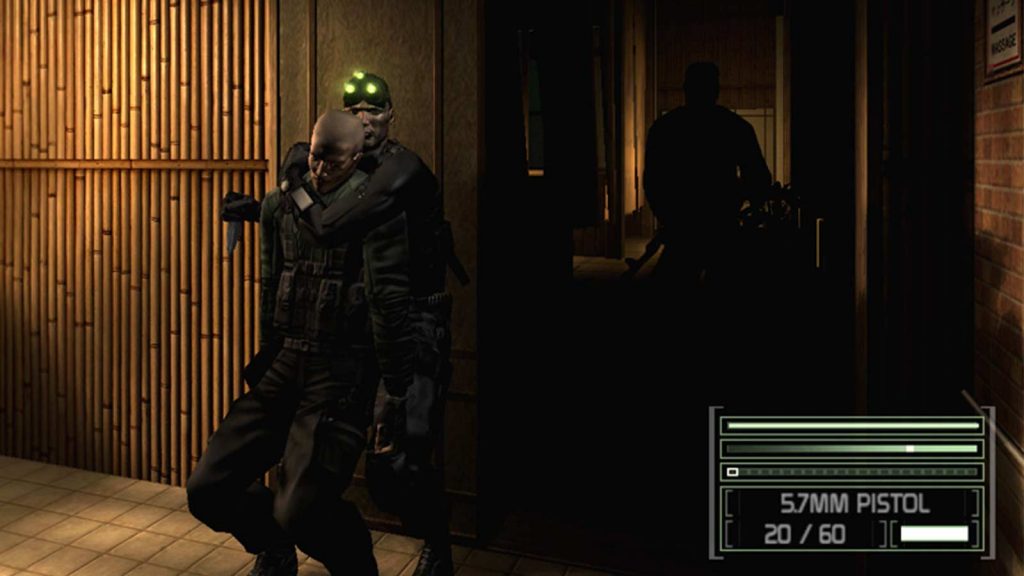 The 2nd bar from the top is the soundbar. How quietly can Sam Fisher choke this guy out?
The 2nd bar from the top is the soundbar. How quietly can Sam Fisher choke this guy out?
Perception
In a much different way, the game Perception (while not exactly a typical stealth game) uses the role of sound as an essential core component to the game. Here, you play a blind woman who must navigate a haunted mansion by means of echolocation through tapping her cane on the floor. If there is no sound, there is no visual. Further considerations come into play when you find out that the tapping (your only method of seeing) is disturbing what lies in the dark.
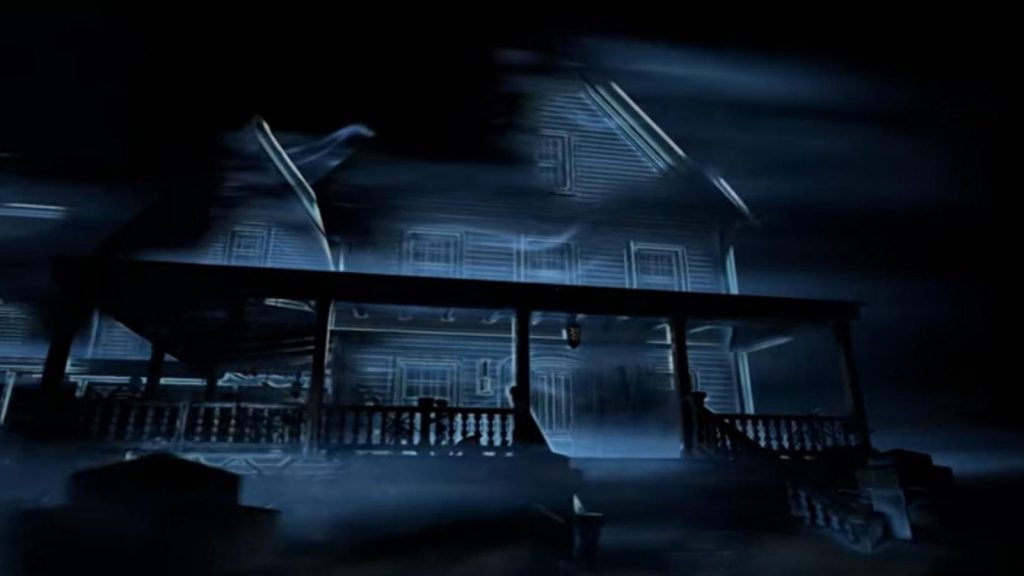 Props to The Deep End Games for trying something new!
Props to The Deep End Games for trying something new!
Feedback
One of the most essential considerations in using sound is about what information you can convey to the player about their progress. It’s a way of letting players know how they’re doing, what’s the current state of things, and if what they’re doing is working or not.
The Long Dark
Let’s first talk about The Long Dark. This is a wilderness survival game where sound actually plays an important part of the immersive experience. The use of environmental sounds is spectacularly crafted. When it starts to get dark in the Alaskan isolate, you can hear the wolves begin to howl in the distance, and you know it’s time to find shelter (quite eerie). The character also provides bodily sounds like a heartbeat, breathing, lip-smacking and other sounds to let you know when your character is starting to get fatigued, thirsty, or too cold.
 The Long Dark is haunting with natural beauty, terrors, and solitude. The sound design is expertly crafted
The Long Dark is haunting with natural beauty, terrors, and solitude. The sound design is expertly crafted
Halo
In the first Halo, when Master Chief’s shields were low, you were alerted with a very famous beeping sound. There was no mistaking that sound for any other sound in the game and you knew exactly what you had to do once you heard it; find some cover!
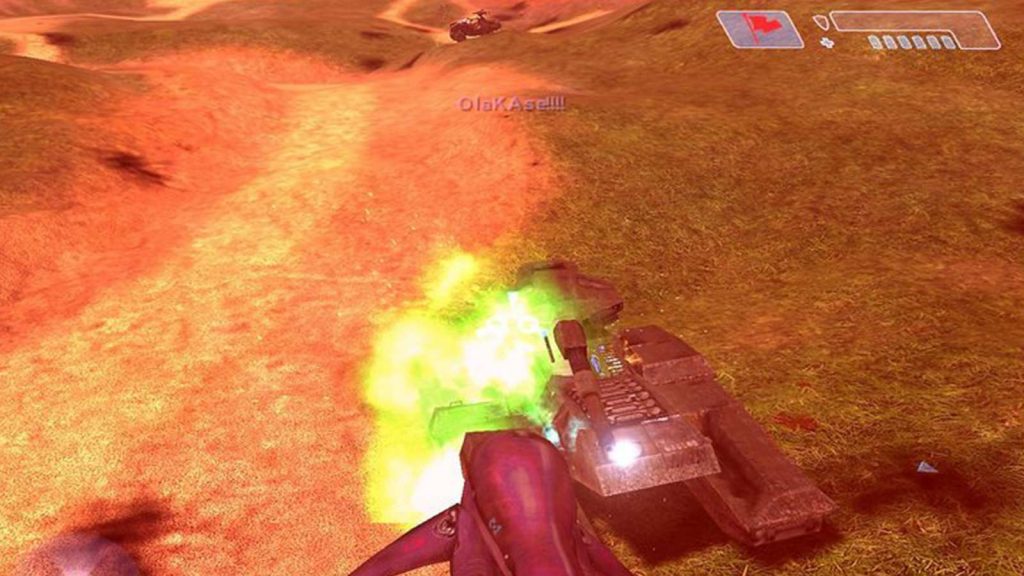 When the screen goes red, you’re probably in trouble
When the screen goes red, you’re probably in trouble
Once that beeping stopped, you knew your shields were about to recharge, which alerted you with a re-charging sound (and a very pleasing sounding one). This is important because, in the heat of combat, you often don’t have time to look down in the corner to see your own health. Having an audible cue grants the player the ability to stay focused on the task at hand. It’s like having an invisible GUI or AI assistant giving you the essential info you’re too distracted to look at.
Super Smash Bros.
In another classic example, Super Smash Bros (pick your version) employs sound as a quintessential tool for every player on the map. Hardcore players know; when things start getting crazy, you have to listen up. Every item comes with a very recognizable sound. When a bomb-omb gets activated, you know very well that you better check your surroundings for that little explosive guy walking back and forth, or risk getting blown sky-high.
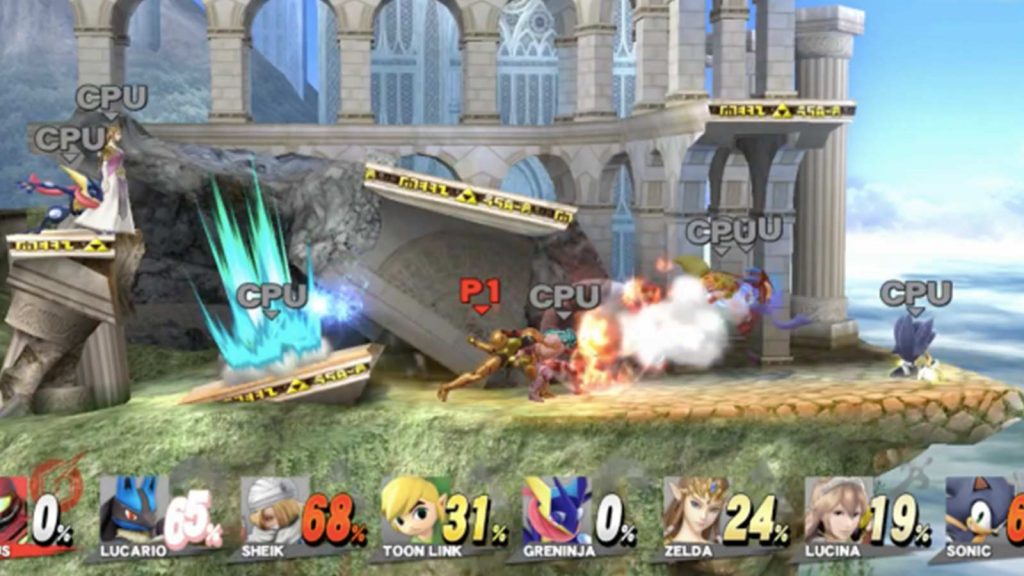 Ever played a brawl with 8 players? It’s hard to see what’s going on at times.
Ever played a brawl with 8 players? It’s hard to see what’s going on at times.
Some items take over the soundtrack entirely, like the invincibility star or the hammer, which brings all attention to the player with one of those super-powered items. Dipping out the music grants an even higher subliminal power to the item, making these some of the most sought-after pickups on the map. And when the Pokeball gets thrown, everybody listens to what sound the newly summoned Pokemon will release because it could be any number of varying chaotic things, and learning these signature calls may just help you survive.
Rhythm
When a game makes music a diegetic component of gameplay, a new world of possibility arises. Players can dive into a natural sense of momentum. Without even diving into the giants like Guitar Hero, Rock Band or DDR, here are a few examples that use rhythm as a foundation for the game’s mechanics.
Geometry Dash
Geometry Dash is a simple tap-based smartphone game that uses the music as an invisible guide to instruct the player on when to jump. While there are no set-in-stone cues (like in Guitar Hero, where the note flies into the target zone), the player is rewarded for their sense of rhythm and syncopation. If you tap exactly within the tempo, you tend to sync up well with the map’s challenges. But Geometry Dashdoesn’t tell you to do this. You are rewarded for understanding the relationship between the music and the way you play. Players don’t always like to be told what to do.
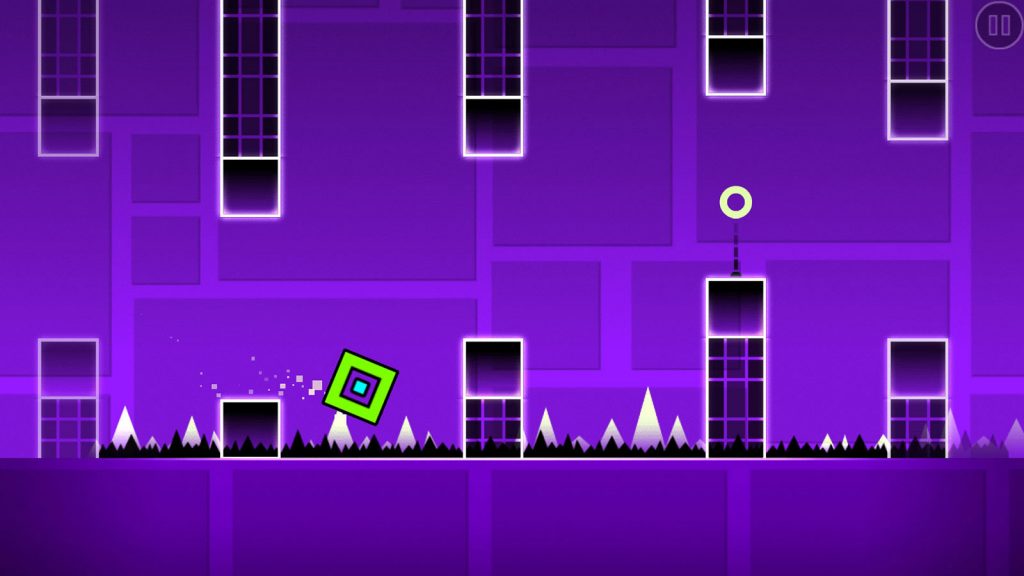 The person playing in the screenshot doesn’t have the best rhythm
The person playing in the screenshot doesn’t have the best rhythm
The downside is that this standard isn’t kept to sync the entire game. While much of the game plays like a rhythm game, sometimes this falls off, kind of missing the mark on what could be a really cool game mechanic. Technically, this game isn’t a rhythm game, but it sure feels like one.
Sound Shapes
In an even more creative approach, Sound Shapes, a PS4 exclusive indie release, animated all of the game’s components to react to the game’s soundtrack. Different musical sounds correlate with the movement and activation of the world’s objects. Having a sense of rhythm then rewards the player to help them interact with the environment, obstacles, and puzzles.

The player also shapes the sound of the music by the choices they make, making them a pseudo conductor for the soundtrack. When the player achieves this level of integration, they’re rewarded with an even fuller level of synchronicity and oneness with the game as everything starts to flow together, which welcomes replay-ability. The music builds as you complete each scene in the level, which is gratifying as well. It’s even addicting to watch (and listen to).
How Will You Use Sound?
While these are some main categorical ways to use sound as a core game mechanic, there may be other ways still unexplored. While sound was once an afterthought, the surging headphone market and the increase of creative sound professionals have helped put sound front and center in gaming. Most gamers, professional and casual alike, have a pair of headphones ready to use.
Get Creative With Sound Effects
When it comes to creating sound for a video game, having a huge available palette of quality sound effects helps enable the creative process. Soundsnap has over 230,000 sounds that are instantly searchable and made available at very affordable prices. Try out Soundsnap for your next project and make sound a priority in your video gaming experience.
